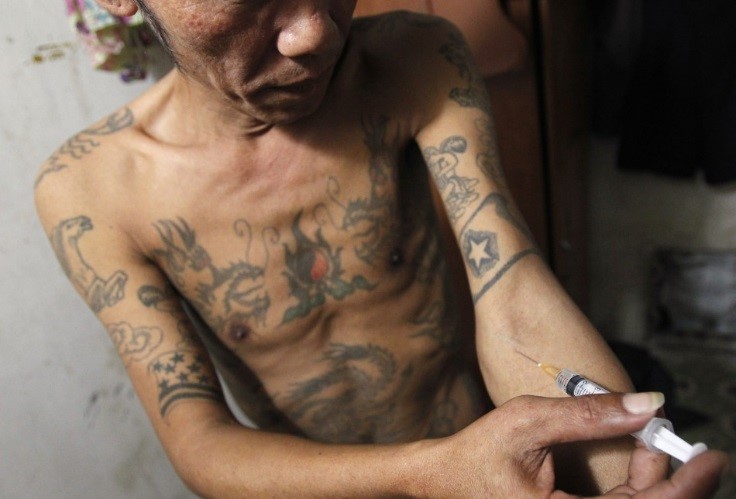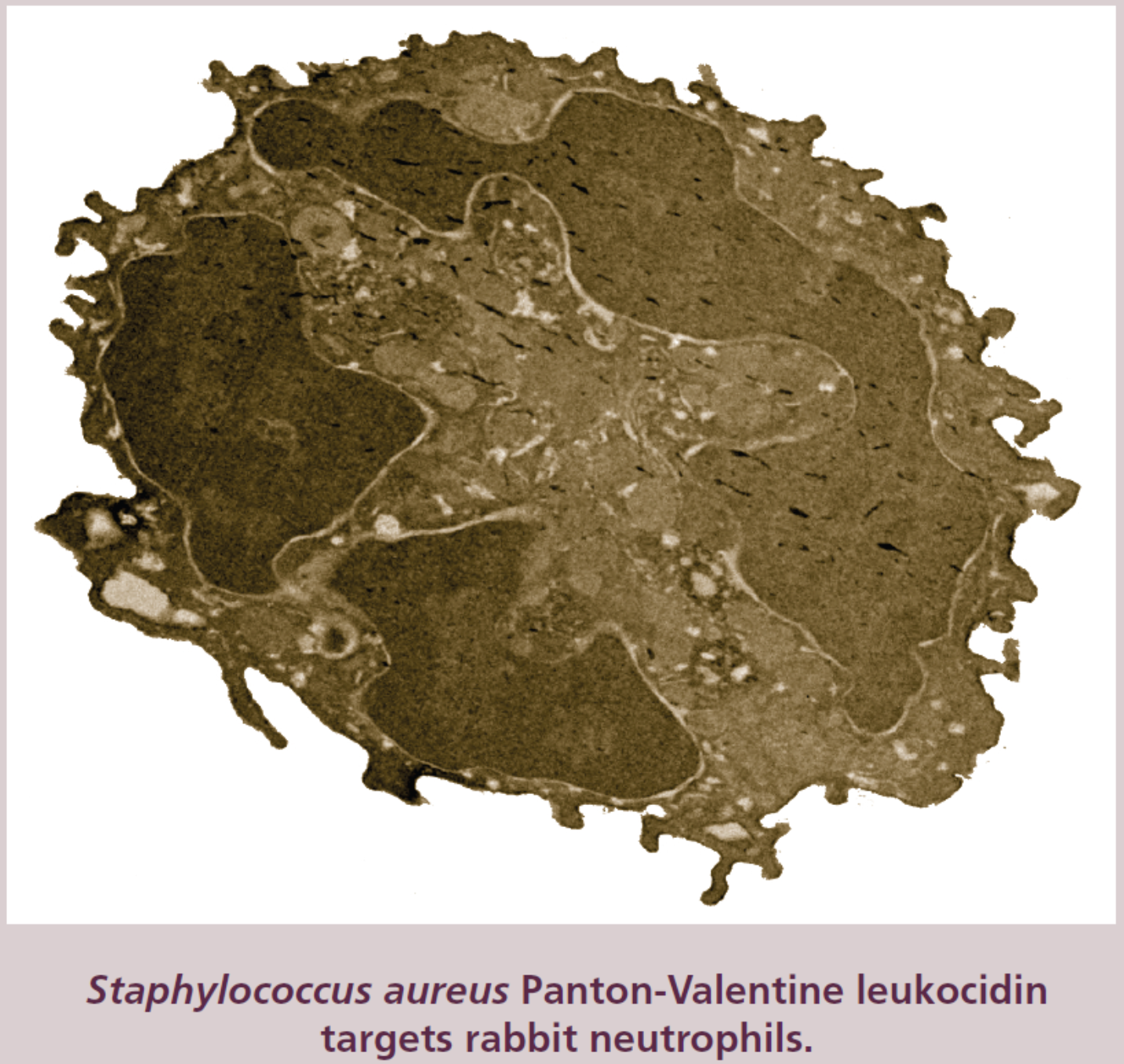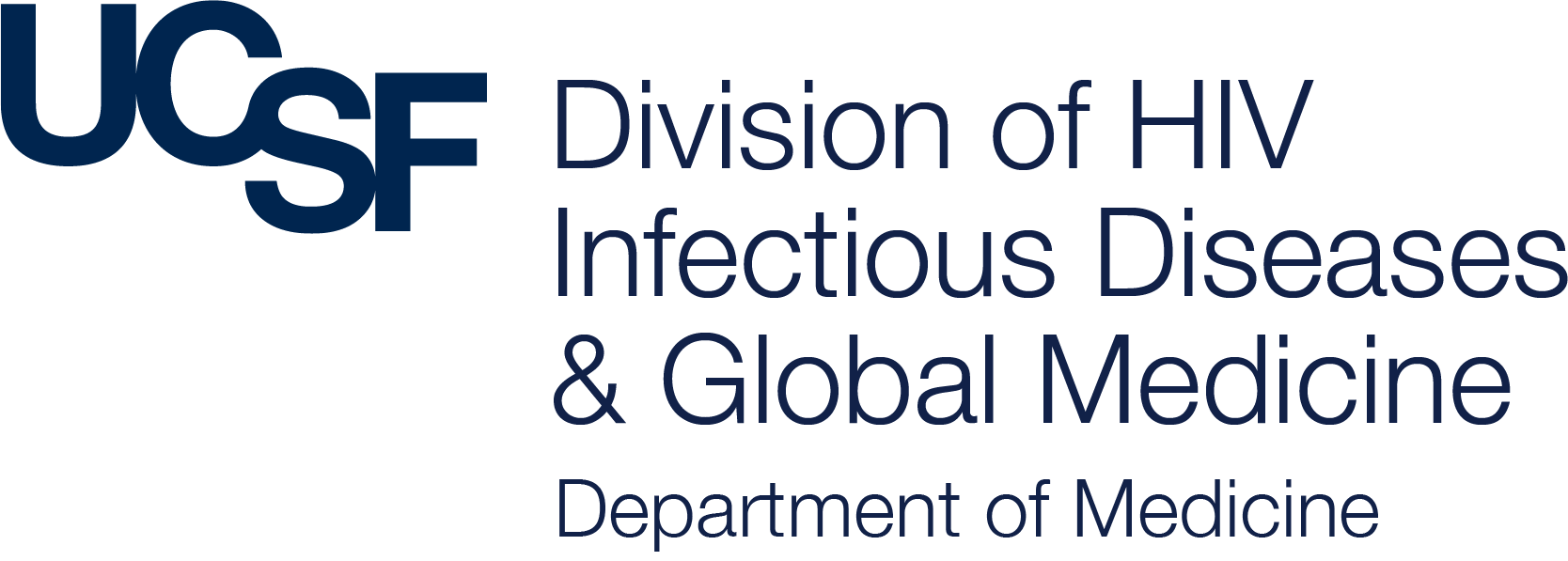Research Areas
Though some infectious diseases could be nearing their end, the threat of new illnesses is constant.
Dangerous viruses, like Ebola, emerge over time and can wreak havoc on a population. Evolving pathogens, such as Staphylococcus aureus, continuously evade treatments and require constant attention. The adaptive nature of infectious pathogens demands researchers who embody the powerful traits of their subject. This is why UCSF's Division of HIV, ID and Global Medicine uses an expansive, innovative and multidisciplinary team approach to address threats from all infectious diseases, old and new.
Read more about the research areas below.
Addiction/Substance Use
We are living in an unprecedented time in the 21st century—historically, culturally, epidemiologically.

In 2015, drug overdose deaths surpassed the number of AIDS deaths at the height of the epidemic in 1995. The opioid epidemic has been called this generation’s AIDS crisis, and the nexus where infectious disease and addiction intersect remains an area of critical research.
The use of alcohol and other drugs is common among persons living with HIV, and injecting drug use is a well-known mode of HIV and viral hepatitis transmission. While not all substance use is problematic, unhealthy substance use is associated with worse outcomes at each step along the HIV and HCV care continua. Untreated substance use disorders have been associated with increased risk behavior, lower engagement in care, decreased receipt of and adherence to antiviral therapies, and decreased viral suppression.
Researchers in the HIV, ID & Global Medicine Division aim to understand the behavioral and biological roles of substance use in health outcomes, including the impacts of stigma and structural barriers to care. Our investigators develop and test interventions to improve the health and HIV-related outcomes of vulnerable populations afflicted by addiction and infectious disease.
Learn more about the UCSF Drug Use Research Group (DURG), a monthly seminar for faculty, postdoctoral fellows, graduate students, and other investigators with a focus on persons who use drugs.
Associated Research Areas
Alcohol, stimulants, opioids, tobacco, addiction medicine, overdose prevention, HIV, hepatitis C virus, tuberculosis, stigma, homelessness, incarceration, health disparities
Associated Researchers
Jacqueline Tulsky (emerita)
Antimicrobial Resistance
Annually more than two million Americans become infected with antibiotic-resistant bacteria and of those more than 23,000 died from these difficult-to-treat infections.

Prevention and treatment of infections caused by antibiotic-resistant bacteria have become an enormous challenge for clinicians worldwide.
Researchers of the HIV, ID & Global Medicine Division conduct basic and translational research to understand better novel mechanisms of antimicrobial resistance and to develop new antibacterial agents and vaccine to combat the spread of antibiotic-resistant organisms, including Staphylococcus aureus, Pseudomonas aeruginosa, Klebsiella pneumoniae, and Acinetobacter baumannii.
Associated Research Areas
Antimicrobial resistance, microbial pathogenesis, preclinical animal efficacy studies, vaccinology, immunotherapeuticsAssociated
Research Areas
Associated Researchers
Henry Chambers, MD
Binh Diep, MD
Som Chatterjee, PhD
Antiretroviral Treatment
Antiretroviral therapy is one of the greatest successes in modern medicine.
It transforms HIV from a uniformly fatal to a chronic disease, keeps HIV individuals healthy, and prevents transmission to others at risk for HIV including from mother to child.
In order to provide lifelong therapy for all persons with HIV globally, we need to improve antiretroviral therapy. Optimal therapies must be potent, safe, and deliverable to populations in need. They must address and prevent HIV drug resistance. They must be compatible with other medications and be safe for pregnancy and breast-feeding. Finally, they must be tolerable for all ages—from youth to seniors—and from the earliest to latest stages of HIV disease. There are many innovative approaches and research needed for the next generation therapies including new combination regimens, injectable and implantable delivery systems, and immune based therapies.
Researchers of the HIV, ID & Global Medicine Division aim to advance antiretroviral therapy by identifying and studying new innovative medications, drug delivery systems, and health care system interventions that enable all individuals living with HIV to receive safe and effective therapy throughout their lifespan.
Associated Research Areas
Acute HIV, adherence measurement, aging, ART delivery, HIV in Africa, HIV diagnostics, , Retention in care, SEARCH study, Viral load monitoring
Associated Researchers
Gabriel Chamie, MD
Monica Gandhi, MD, MPH
Elvin Geng, MD, MPH
Diane Havlir, MD
Vivek Jain, MD, MAS
Carina Marquez, MD
Chris Pilcher, MD
Arboviruses (including Zika and Dengue)
Dengue is the most rapidly spreading mosquito-borne virus globally.
Zika and chikungunya, two additional viruses transmitted by the same vector (Aedes aegypti) have also spread to the American continent in recent years causing major outbreaks.
Viruses transmitted by the Aedes mosquito, including dengue, chikungunya and Zika, have caused major outbreaks around the globe in the past few years. The factors driving their spread, and the interactions between them, remain poorly understood and this limits our capacity to predict future outbreaks and target control interventions appropriately.
Researchers of the HIV, ID & Global Medicine Division aim to understand drivers of the spread of dengue, chikungunya and Zika, as well as their interactions, to inform control interventions.
Associated Research Areas
Infectious diseases, vector-borne diseases, epidemiology, global health
Associated Researchers
Isabel Rodríguez-Barraquer, MD, PhD
COVID-19
Section coming soon
Food Insecurity
The relationship between HIV/AIDS and food insecurity—that is, the state of being without sufficient, affordable, and nutritious food—is incredibly complex.
Widespread food insecurity continues to challenges the global response to the AIDS epidemic, and also worsens health for NCDs. Food insecurity contributes to poor health in various ways, including poor nutrition, worse mental health, increasing risk of HIV transmission and by compromising adherence to treatment.
Researchers of the HIV, ID & Global Medicine Division aim to understand food insecurity, its relationship with HIV/AIDS and other chronic illnesses, and how to improve health with food security and economic strengthening interventions.
Associated Research Areas
Food insecurity, HIV, chronic disease, type 2 diabetes, women’s sexual and reproductive health, urban gardening, agricultural and other livelihood interventions. HIV stigma, ART adherence, mental health.
Associated Researchers
Kartika Palar, PhD
Sheri Weiser, MD
HIV Cure
Antiretroviral therapy can control but not eliminate HIV from an infected person.

As a consequence, people must take antiretroviral drugs for life. There is a growing recognition that a short-term intervention that results in elimination of the virus (a “cure”) or durable natural control of the virus (a “remission”) is both desirable and feasible.
Antiretroviral therapy results in complete or near-complete inhibition of HIV replication, but it does not affect the permanent reservoir of the virus. As a consequence, HIV therapies must be taken for life. Life-long administration of therapy is challenging for some people due to side effects or limited access to drugs. Some communities and national governments lack the resources to deliver therapy to everyone. A curative intervention that allows people to live and remain healthy without taking antiretroviral drugs would address these concerns.
Researchers of the HIV, ID & Global Medicine Division aim to understand why HIV persists during antiretroviral therapy and how to measure the virus during therapy. The researchers are also studying the capacity of a number of interventions to either clear or control the virus.
Associated Research Areas
Chronic disease, inflammation, immune dysfunction, HIV stigma, experimental medicine
Associated Researchers
Steven Deeks, MD
Timothy Henrich, MD
Peter Hunt, MD
Sulggi Lee, MD, PhD
HIV
Global HIV medicine encompasses the safe and effective prevention and treatment of HIV and its associated complications for the 37 million persons living with HIV around the world. Our research approaches use epidemiology, clinical trials, implementation science, social science, virology, economics, population science, artificial intelligence and includes interventions such as antiretroviral therapy, pre –exposure prophylaxis (PrEP) to keep persons living with HIV healthy and to bring new HIV cases to an end.
We have effective therapy to prevent and treat HIV infection, yet a third of persons living with HIV do not know their diagnosis, and only about half of persons in need of HIV therapy are receiving it. New regimens, health delivery systems, and new approaches to engage vulnerable populations are needed to realize the tremendous potential of scientific advances. Multi-disciplinary approaches such as those that bring together bench science on HIV transmission with HIV behavioral science are needed to design strategic approaches to HIV prevention and treatment.
Researchers of the HIV, ID & Global Medicine Division aim to improve health by using multidisciplinary approaches to studyi effective strategies to diagnose and treat HIV worldwide, improve adherence to ART and retention in care, and monitor ART’s effectiveness within a human rights framework.
Associated Research Areas
Infectious diseases, vector-borne diseases, epidemiology, global health
Associated Researchers
Gabriel Chamie, MD
Monica Gandhi, MD, MPH
Elvin Geng, MD, MPH
Eric Goosby, MD
Diane Havlir, MD
Vivek Jain, MD, MAS
Teri Liegler, PhD
Carina Marquez, MD
Hepatitis C
Viral hepatitis and liver disease are significant and rising drivers of morbidity and mortality in people living with HIV/AIDS, as well as in the general population.

Viral hepatitis B and C disproportionately affect people living with HIV/AIDS, and those co-infected with HIV can experience more rapid disease progression and damage to the liver. Fatty liver disease is on the rise around the world, including in those living with HIV who may be at increased risk due to multiple drivers including medications, metabolic alterations, and obesity.
Researchers of the HIV, ID & Global Medicine Division aim to optimize the treatment of viral hepatitis and fatty liver disease in both HIV-infected and uninfected persons. We continue to develop and disseminate innovative models of HCV treatment and prevention for the most vulnerable and hardest to reach populations as part of the larger goal of HCV elimination.
Associated Research Areas
Hepatitis C, Hepatitis B, Non-alcoholic fatty liver disease (NALFD), non-alcoholic steatohepatitis (NASH), viral hepatitis elimination
Associated Researchers
Elise Riley, PhD, MPH
Infection Control/Antimicrobial Stewardship
Infection prevention and control and antimicrobial stewardship are key areas that impact healthcare delivery and outcomes. With the emergence of organisms resistant to multiple antimicrobial agents, increased attention is now focused on these areas.

Organisms that are resistant to multiple antibiotics are increasingly common, particularly in hospitals and other healthcare settings. Inappropriate use of antibiotics contributes to the development and spread of these organisms and also leads to important complications such as infection with Clostridium difficile.
Faculty in the HIV, ID, Global Medicine Division aim to decrease inappropriate use of antibiotics and prevent the spread of organisms within our healthcare setting. We also collaborate with experts from multiple disciplines (including public health, infection control practice, pharmacy, and quality improvement) to advance our understanding of which strategies are most effective.
Associated Research Areas
Infection prevention, Infection control, Antimicrobial stewardship, Multidrug-resistant organism, Clostridium difficile
Associated Researchers
Lisa Winston, MD
Vivek Jain, MD, MAS
Malaria
Malaria is one of the most important infectious diseases in the world, causing hundreds of millions of illnesses and about half a million deaths per year, mostly in children in Africa, but also affecting children and adults in most of the tropics. Other major risk groups are pregnant women and travelers from nonendemic regions to areas endemic for malaria.
Although effective therapies for malaria are available, individuals in endemic areas suffer repeated attacks, and effective prevention is constrained by limited resources, logistical problems, increasing resistance to available drugs and insecticides, and related challenges.
Researchers of the HIV, ID & Global Medicine Division and their collaborators are pursuing many areas of study of malaria, including laboratory based studies at UCSF and clinical and translational studies in Africa, particularly in Uganda. Research areas include clinical trials to optimize the therapy and prevention of malaria, surveillance of malaria in areas with varied malaria endemicity, studies of the epidemiology of malaria, evaluation of the pharmacology of antimalarial drugs, studies of transmission to mosquitoes and insecticide resistance, and evaluation of human immune responses against malaria.
Associated Research Areas
Malaria, Plasmodium falciparum, anopheline mosquitoes, antimalarial drug efficacy, antimalarial drug resistance, pharmacology of malaria drugs, antimalarial immunity, insecticide resistance.
Associated Researchers
Philip Rosenthal, MD
Grant Dorsey, MD, PhD
Bryan Greenhouse, MD
Isabel Rodriguez, MD, PhD
Affiliated faculty
Non-Communicable Diseases
Non-communicable diseases include diseases such as cardiovascular disease (hypertension and heart attacks), diabetes, respiratory disease and cancer. Many countries grappling with infectious disease epidemics such as HIV, TB and malaria, are now also faced with burgeoning burdens of these non-communicable disease due to changes, in dietary habits, technology, environmental factors and global warming.
Non-communicable diseases kill over 38 million persons every year, and three quarters of these are in low and middle income countries. In many countries, these diseases overlay a heavy burden caused by infectious diseases such as HIV, TB and malaria. There has been very little interest or investment in research aimed at improving optimal prevention, treatment and health systems for delivery of care for non-communicable diseases in these regions.
Researchers of the HIV, ID & Global Medicine Division are focusing on creating a new generation of healthcare models in low-income countries for the prevention and treatment of chronic diseases. We are incorporating both infectious diseases (e.g., HIV) and non-communicable diseases (e.g., hypertension and diabetes) in our care models, resulting in more patient-centered care, reduced costs, and reduced stigma.
Associated Researchers
Gabriel Chamie, MD, MPH
Diane Havlir, MD
Kartika Palar, PhD
Monika Roy, MD
Pulmonary Disease
The lungs are a major target of HIV and HIV-associated pulmonary diseases are leading causes of both hospitalization and death.
HIV-associated opportunistic pneumonias, including tuberculosis (TB), continue to be among the leading opportunistic infections in persons with HIV infection worldwide. As the HIV population ages in San Francisco, the US and throughout the world, age-associated pulmonary diseases such as Chronic Obstructive Pulmonary Disease (COPD) are increasing.
Our goal is to improve the diagnosis and clinical management of HIV-associated opportunistic pneumonias and COPD both in the US and throughout the world. We also strive to understand the complex relationships between chronic immune activation and inflammation, aging, and the microbial communities that reside in the lungs of persons with HIV and the development and progression of HIV-associated COPD.
Associated Research Areas
HIV, AIDS, TB, Pneumonia, COPD, Aging
Associated Researchers
Laurence Huang, MD
Tuberculosis
Tuberculosis (TB) is the leading cause of death among people living with HIV infection, and is now the leading cause of death due to a single infectious pathogen worldwide.
TB rates worldwide have not declined at an acceptable pace for a treatable and preventable disease, due to many challenges including under-diagnosis, delayed access to treatment, drug resistance (including multi-drug resistant [MDR] and extensively drug resistant [XDR] TB), growing populations at risk of TB due to immune suppression from HIV and due to non-communicable conditions such as diabetes and substance abuse, and ongoing TB transmission with a large reservoir of “latently” infected people who may develop TB disease later in life.
Researchers in the Division of HIV, Infectious Diseases & Global Medicine at UCSF aim to study TB transmission, TB acquisition and the effects of latent TB infection on adult and child health, TB/HIV co-infection, TB prevention in vulnerable groups including children, teens, HIV-infected persons and persons with non-communicable diseases including alcohol abuse, and implementation science to scale up proven TB/HIV interventions, such as Isoniazid Preventive Therapy, worldwide.
Associated Research Areas
TB/HIV Co-infection, TB Transmission dynamics, Latent TB Infection, Antiretroviral therapy, Implementation Science, Social Network Analysis, Lung microbiome, HIV-associated pulmonary disease, Adherence, Pharmacology, ARV and TB drug levels in hair, Alcohol use
Associated Researchers
Gabriel Chamie, MD, MPH
Edwin Charlebois, MPH, PhD
Monica Gandhi, MD, MPH
Eric Goosby, MD
Judith Hahn, PhD
Diane Havlir, MD
Laurence Huang, MD
Carina Marquez, MD, MPH
Mike Reid, MD
Vulnerable Populations
All people should have the opportunity to make choices that let them live a healthy, fulfilled life, no matter what their income, neighborhood, education or ethnic background might be.
However, many people face multiple challenges that threaten their wellbeing and create barriers to needed care.
Our research aims are to understand gaps in health and identify points of potential intervention in order to change the way health care is delivered in vulnerable populations, and to provide tools that allow vulnerable individuals to make better health decisions.
Associated Research Areas
Health equity, homelessness, food insecurity, mental health, substance use, violence, co-occurring conditions, access to health care, retention in care, adherence to medication
Associated Researchers
Katerina Christopoulos, MD, MPH
Paula Lum, MD, MPH
Kartika Palar, PhD
Elise Riley, PhD, MPH
Sheri Weiser, MD, MPH, MA
